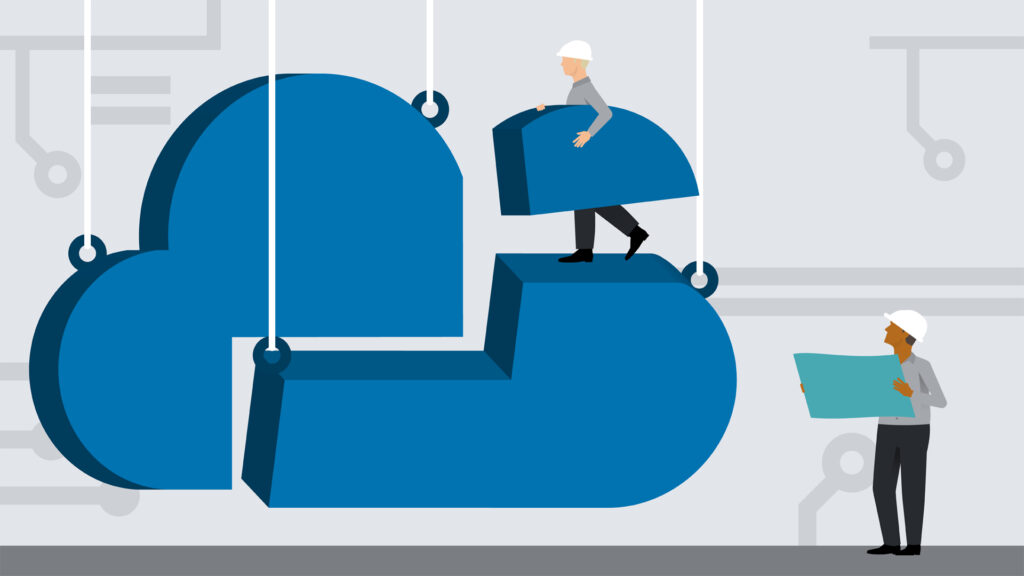How Cloud Security Works to Protect from Data Breaches
Auxin agrees with Gartner that “Cloud security refers to the processes, mechanisms, and services used to control the security, compliance, and other usage risks of cloud computing.” Sometimes, your employees can be the most significant vulnerability your system can have. While talking about cloud security assaults, social engineering cannot be ignored. Social engineering is the non-technical aspect of attacking, relying majorly on human interaction and extracting information from them through different attacks. The success of a social engineering attack depends on the attacker’s skills to manipulate the victim into executing the desired action. Advanced attack modes are becoming more and more challenging to differentiate between a legitimate source and a cyber breach.
Tailgating is also a social engineering attack; the attacker tries to gain access to a restricted area without going through an authentication process, such as a passcode-protected door or biometric scanner, by following an employee or luring them into giving you access.
Another method is that the cybercriminals do this by locating a secure area or any organization, waiting outside for an official employee to enter, and asking them to hold the door so they can slip through the defenses intended to protect the locality.
Tailgating is further followed by a ransomware or malware attack; the attacker enters the facility and installs some malicious hardware or software in the system that infects the network in a deadly manner. Following is an example of tailgating attacks over the years.
Example
The Stuxnet attack on Iran’s nuclear program was a tailgating attack that affected over 200,000 computers and gained access. The attack was launched through a worker’s USB and affected almost one thousand uranium-enriching configurations. Tailgating attacks are deadly for organizations that deal with high-profile government assets.

Organizations at risk
Most organizations ignore the threats of ground-based attacks such as tailgating. The most high-profile organizations are at risk throughout, even after implementing security systems. What most organizations don’t think is that their employees can also be a way their security can be risked. Organizations having the following characteristics are more likely to feel a tailgate attack.
- Organizations with several gates and larger office areas:
If your office has many separate entries, you will be a more exciting target for cybercriminals to attack.
- Organizations with lots of employees:
Huge organizations with hundreds of employees are easy targets for attackers. Displeased ex-employees can gather treasured information on your internal security practices, and a small group may use this knowledge for criminal purposes.
- Organizations with poor identification and authentication processes:
In offices with simple ID card identification or with no CCTV camera or digital authentication, tailgating attacks are much easier. Companies following traditional methods and not advancing with time face these difficulties.
Preventions
Incorporating technology with basic security training for employees and spreading awareness about social engineering attacks can help prevent these tailgating attacks.
Regulating Access
Installing the necessary control system and having strict management over the design are the requirements for checking who is entering the office. The busy offices can install walk-through systems and only allow authorized access. Visitors should be regularized, such as taking appointments for meetings, and their entries should be entered in the inventory.
Video Scrutiny
Video cameras are an excellent option to improve building security and prevent tailgating attacks. The video system serves multiple purposes; it enhances safety and helps officers regulate security. AI-based procedures can also differ between employees and intruders; they save the employee information once, and it helps identify intruders the best—this advanced technology helps many organizations.
Digital Authentication
The company should digitalize all payment modes, billing, and staff information so that no previous employee can interfere with the system’s details. More authentication can be done through biometrics and eye retina scanning devices. QR code scanning is the latest method in this regard.
Four Ways to Prevent Social Engineering Attacks
Preventing tailgating attacks requires an advanced approach. Here are four ways to improve tailgating security:
Security Training:
An effective security exercise every month encourages concentration on physical security threats, including tailgating, as well as how to alleviate them. Keeping security training is ideal because it strengthens the skills you practice, keeping them top of mind.
Educating Staff:
Because many employees lack knowledge of social engineering tactics, they cannot spot tailgating attacks. Security awareness drill programs are a good start, but you can take them further by faking attacks. Experiencing realistic attack situations strengthens security awareness.
Another effective way to get staff members comfortable with social engineering strategies is through simulated phishing. You can send phishing emails to staff and evaluate their awareness by analyzing how they rejoin. At the very least, these simulated attacks keep staff members alert and on the watch for questionable behavior.
Conclusion
In conclusion, people will always find new ways to take advantage of other people. Cyber assaults have been here for more than a decade, and security is also advancing, but we cannot say that any system is a hundred percent secure.
Being mindful of attacks and up-to-date with the current modes by security best practices through security awareness training is your best protection against these types of threats because it will reduce the probability of someone entering the area ignored and the risk of an employee unintentionally assisting them. So, it serves a dual purpose.
Threat artists don’t limit the scope of their malicious actions to digital systems. Physical security menials are not some artifacts of the past. They happen frequently; many businesses aren’t resourced or prepared to lessen them. Start with better security awareness training and fake social engineering attacks to stop tailgating in its tracks, then step up your efforts to strengthen physical entree controls. For more insightful blogs, visit auxin.io






